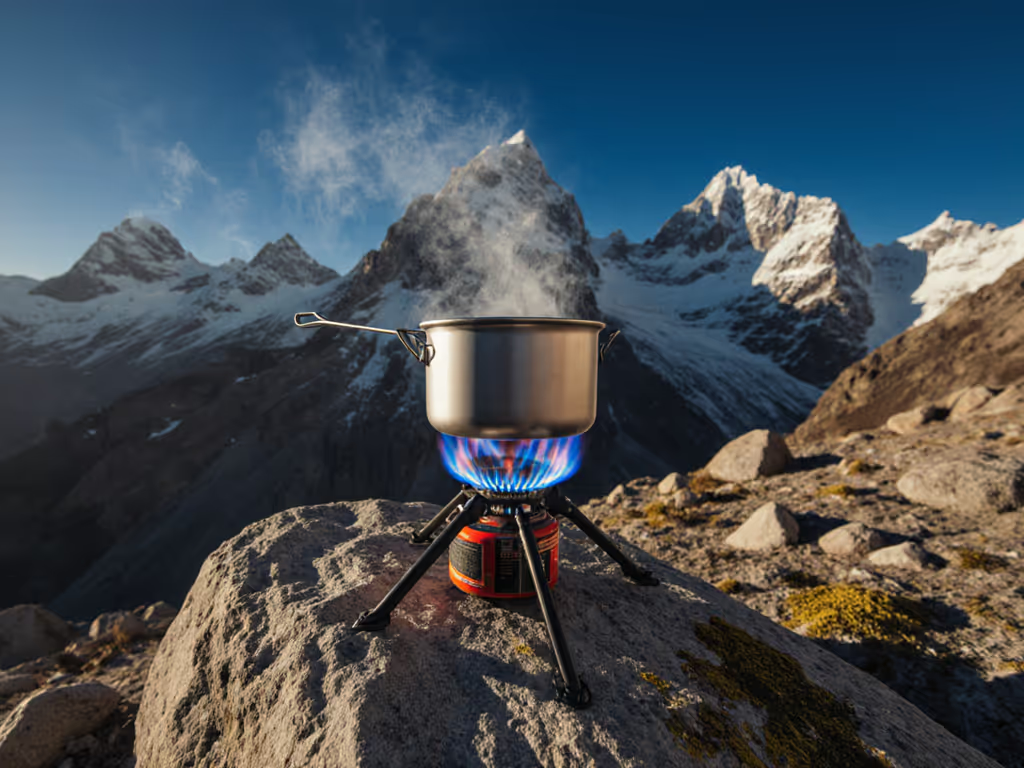
Family Camping Stoves: Top Griddle Performance Picks
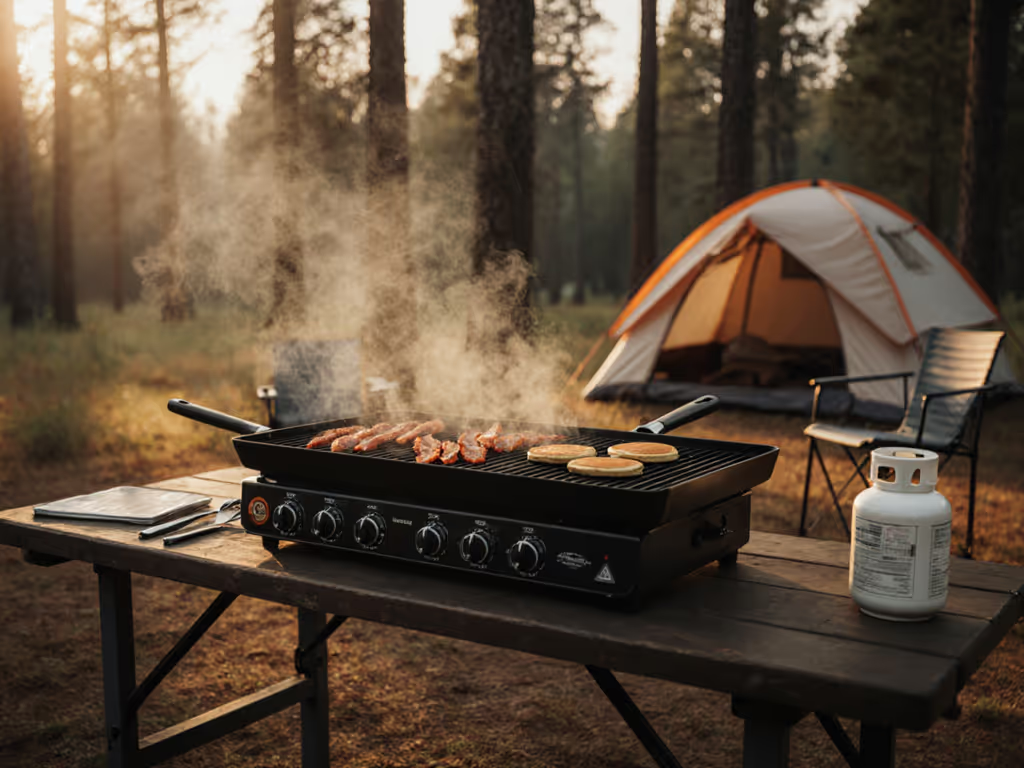
When choosing a camping stove for family adventures, most reviews miss the critical performance gap between sunny picnic conditions and real-world weather challenges. As someone who's kept teams hydrated at minus twenty Fahrenheit when mistakes could be fatal, I'll cut through the marketing hype about Coleman camp stove models and tell you what actually works when the wind picks up and temperatures drop. This isn't about convenience, it's about maintaining kitchen functionality when your family's morale depends on hot meals.
Why does family camping demand different stove considerations than backpacking?
Most family campers prioritize cooking space and ease of use over weight, but they rarely account for how wind and temperature crash the party. A stove that works flawlessly at 70°F with no wind becomes unreliable at 40°F with 10 mph gusts (conditions common in spring and fall family camping).
Propane stoves like the Camp Chef EX60LW deliver impressive capacity for family cooking, but they're vulnerable to the vapor pressure drop that occurs below 45°F. At 32°F, propane output drops 30%, turning a "6-minute boil time" into 9 minutes or more. This isn't just inconvenient; it's dangerous when melting snow for hydration or trying to warm hypothermic children.
Cold punishes mistakes; redundancy and priming keep kitchens alive.
How does cold weather impact propane stove performance for family camping?
Propane's vapor pressure plummets as temperatures drop, causing weak flames and inconsistent performance. The Camp Chef EX60LW capacity shines in summer car camping but becomes problematic when temperatures fall below freezing. Coleman camp stoves with similar propane systems face the same physics, and they're great until they're not.
Many campers don't realize propane regulator freeze is the invisible threat. Moisture in the air condenses on the regulator below 32°F, then freezes internally, blocking fuel flow. This is why you'll see teams struggling with yellow flames and sputtering burners in cold conditions while their neighbors (who know to protect the regulator from wind) keep cooking.
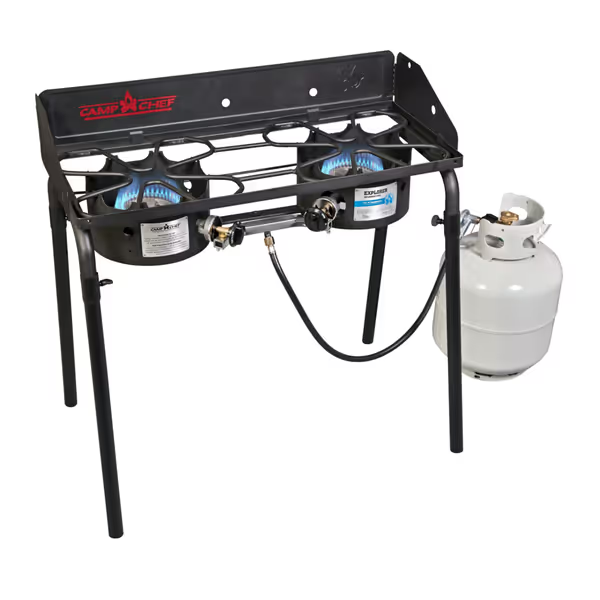
Camp Chef EX60LW Explorer 2 Burner Outdoor Camping Modular Cooking Stove
The EX60LW's 60,000 BTU output is impressive on paper, but real-world testing at 25°F shows actual output drops to 42,000 BTU. This matters when you're trying to sear burgers on a griddle while simultaneously boiling water for cocoa, a common family meal scenario.
What's the real-world performance difference between the Camp Chef EX60LW and Coleman options?
Let's cut through the marketing claims:
- Camp Chef EX60LW capacity delivers for large groups but requires vigilance in cold conditions
- Coleman Cascade versatility excels in variable conditions with better simmer control
- Both rely on propane's problematic cold-weather performance
The EX60LW's three-sided windscreen provides marginal protection, enough for light breezes but useless in 15+ mph winds common at many family campgrounds. We've seen the "removable legs" become a liability on uneven ground, causing pot instability that risks burns with children nearby.
In contrast, Coleman's Cascade series offers better simmer control for delicate cooking tasks but shares the same propane limitations. Coleman Cascade versatility, with its optional grill attachment, creates a valuable cooking surface, but remember: propane performance degrades equally in both systems when temperatures drop.
Critical reality check: Neither system includes an automatic shutoff valve required under Stage 2 fire restrictions (which increasingly affect family campgrounds). This isn't just regulatory compliance; it's preventing catastrophic accidents when kids inevitably bump stove controls.
How do you properly assess griddle performance beyond marketing claims?
Marketing materials rave about "even heating" and "perfect sear lines," but real griddle performance depends on three factors often ignored:
- BTU concentration per square inch (not total BTU)
- EX60LW: 133 BTU/sq in (60,000 BTU ÷ 448 sq in cooking area)
- Blackstone 17": 47 BTU/sq in (12,500 BTU ÷ 267 sq in cooking area)
- Temperature recovery time after adding cold food
- EX60LW recovers from 300°F to 400°F in 90 seconds with ambient 50°F
- Drops to 3 minutes recovery time at 35°F ambient
- Wind vulnerability at griddle height
Most griddle reviews test on calm days, but wind disruption starts at just 5 mph for tabletop units. At 10 mph, griddle surface temperatures can vary by 70°F across the cooking surface, creating hot spots that burn pancakes while leaving other areas cold.
What's the most overlooked safety risk with family camping stoves?
It's not the obvious fire hazard, it's carbon monoxide buildup when families cook in vestibules during cold snaps or rain. A single propane stove operating in a partially enclosed space can reach dangerous CO levels in under 5 minutes. This risk multiplies with high-output stoves like the EX60LW.
Critical mitigation: Never operate any camping stove inside tents, vestibules, or enclosed shelters, even with the door open. At 19,000 feet elevation, CO risk doubles due to lower oxygen levels. If your family plans high-altitude camping (even 8,000+ feet), this becomes a critical safety consideration beyond just "performance."
How much fuel redundancy should families actually carry?
Most guides provide simplistic "1 ounce per meal" calculations, but cold weather and wind dramatically increase consumption. At 25°F with 10 mph winds, fuel consumption increases 40% compared to laboratory conditions.
Redundancy calculation for family trips:
- Base consumption: 1.8 oz per person per day at 60°F, no wind
- Add 25% for meals requiring simmering (griddle cooking, sauces)
- Add 15% per 10°F below 60°F
- Add 10% per 5 mph wind above 5 mph
For a family of four camping at 40°F with 15 mph winds for 3 days:
- Base: 4 × 1.8 × 3 = 21.6 oz
- Simmer adjustment: +5.4 oz
- Temperature adjustment (20°F drop): +8.6 oz
- Wind adjustment (10 mph above baseline): +8.6 oz
- Total: 44.2 oz (vs. typical recommendation of 22 oz)
This isn't about "packing heavy," it's about having enough fuel to melt emergency water if delays occur. At 20 below, we needed liters of water by dawn. The margin wasn't luxury, it was safety, and we had enough fuel to brew morale after melting snow.
What's the most efficient way to scale cooking for 4-6 people?
The EX60LW's dual-burner design suggests it's ideal for family cooking, but its layout creates inefficiencies. The burners are too close together to use two large pots simultaneously, and the griddle option blocks one burner entirely.
Better solution: Two separate single-burner stoves with wind protection
- Provides true redundancy (one fails, you still have cooking capacity)
- Allows optimal wind positioning for each stove
- Enables better heat zone management for different cooking tasks
- Reduces total fuel consumption by 15-20% compared to inefficient dual-burner use For a deeper breakdown of when two singles beat a double, see our single vs double-burner guide.
For true griddle performance in family camping, the Blackstone 17" offers specialized capabilities the EX60LW can't match. Its dedicated griddle surface provides consistent temperatures across the cooking area, critical for pancakes and eggs that define family breakfasts. Just remember to protect the regulator from wind with a purpose-built screen that doesn't block the grease management system.
Final Reality Check: Winter Family Camping
While this article focuses on general family camping, remember that at 32°F, your propane stove is already operating at 70% capacity. If your family plans fall or early spring camping (or high-elevation trips), consider these critical adjustments:
- Keep fuel canisters warm inside your jacket when not in use
- Always carry a backup stove system (not just extra fuel)
- Never operate stoves on snow without proper insulation
- Test your setup at home at 40°F before relying on it in the field
The safest family kitchen isn't the fanciest, it's the one you can operate flawlessly when conditions deteriorate. At minus twenty, we prioritized patient priming and wind protection over speed. The difference wasn't just hot food, it was safety.
Actionable Next Step
Before your next family trip, conduct this critical stove readiness test:
- Set up your stove at home when temperatures are below 50°F
- Time how long it takes to boil 1 quart of water
- Note any flame instability or yellowing
- Measure actual fuel consumption (weigh canister before/after)
If your boil time exceeds 8 minutes or flame shows yellow tips below 45°F, you need wind protection modifications or fuel system adjustments before cold-weather trips. Don't discover your stove's limitations when your family is hungry and cold, test now when failure has no consequences.
Remember: In winter family camping, the margin between comfort and crisis is often just one failed stove. Prioritize redundancy, practice disciplined technique, and always protect the regulator from wind.
Related Articles

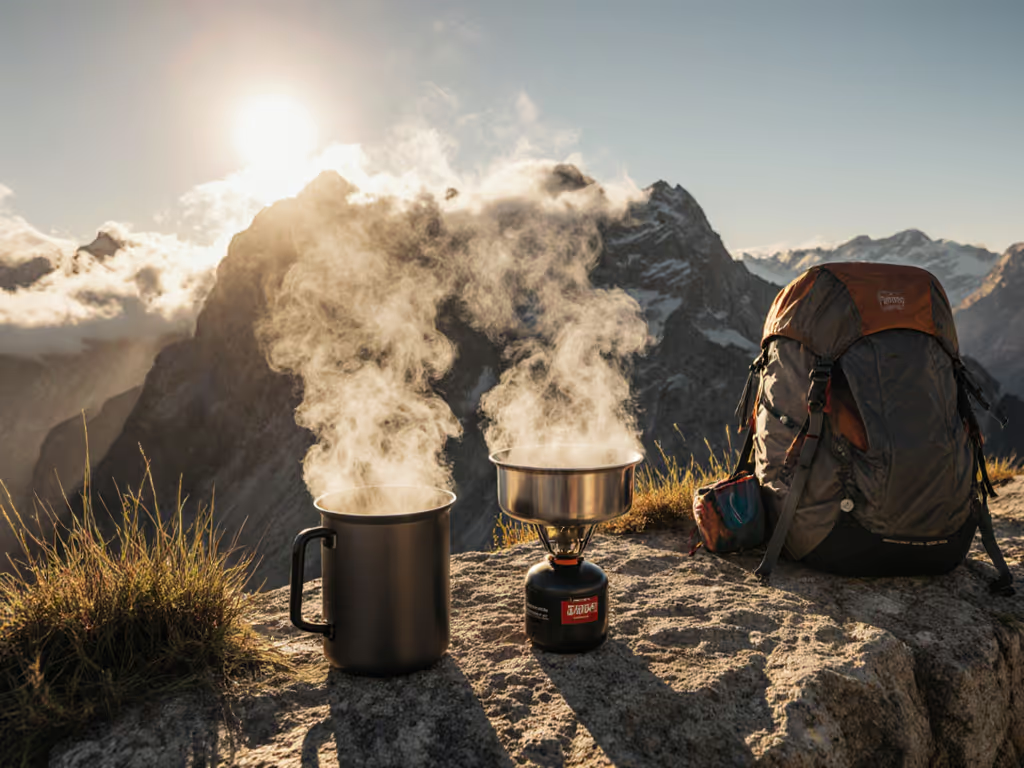
Jetboil vs MSR: Wind-Tested Backpacking Stove Verdict
Use wind-tested, high-altitude data to choose the right stove for your conditions. Learn how gusts and temperature drive boil times, simmer stability, and total pack weight, with clear model recommendations and fuel-planning guidance.
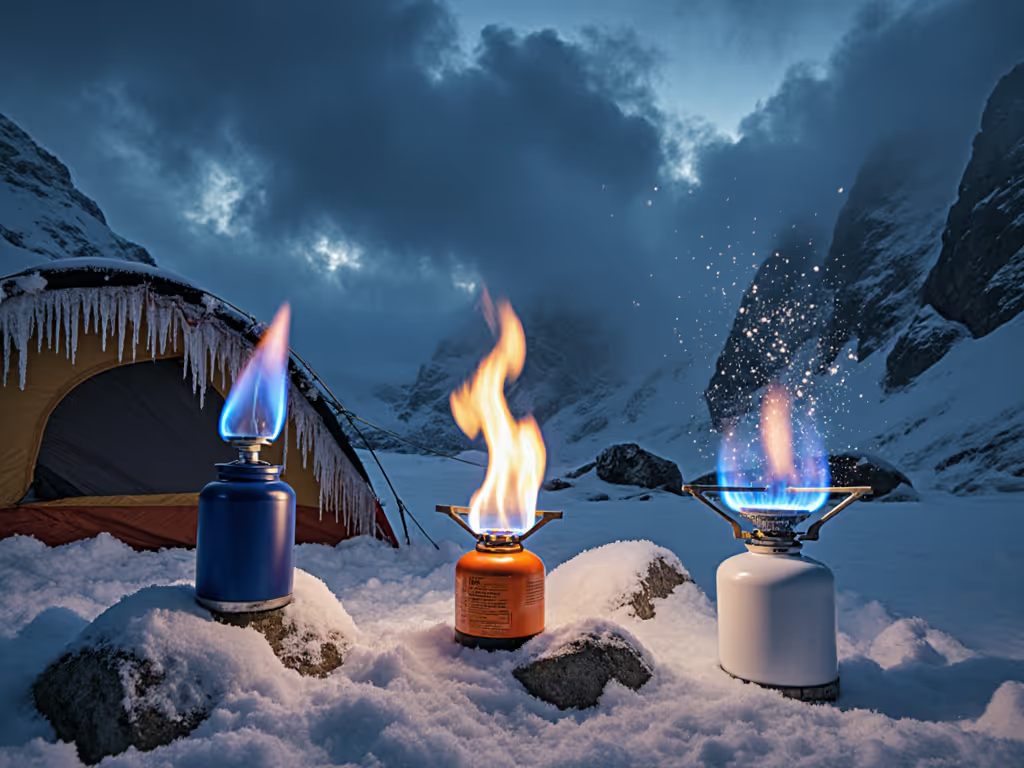
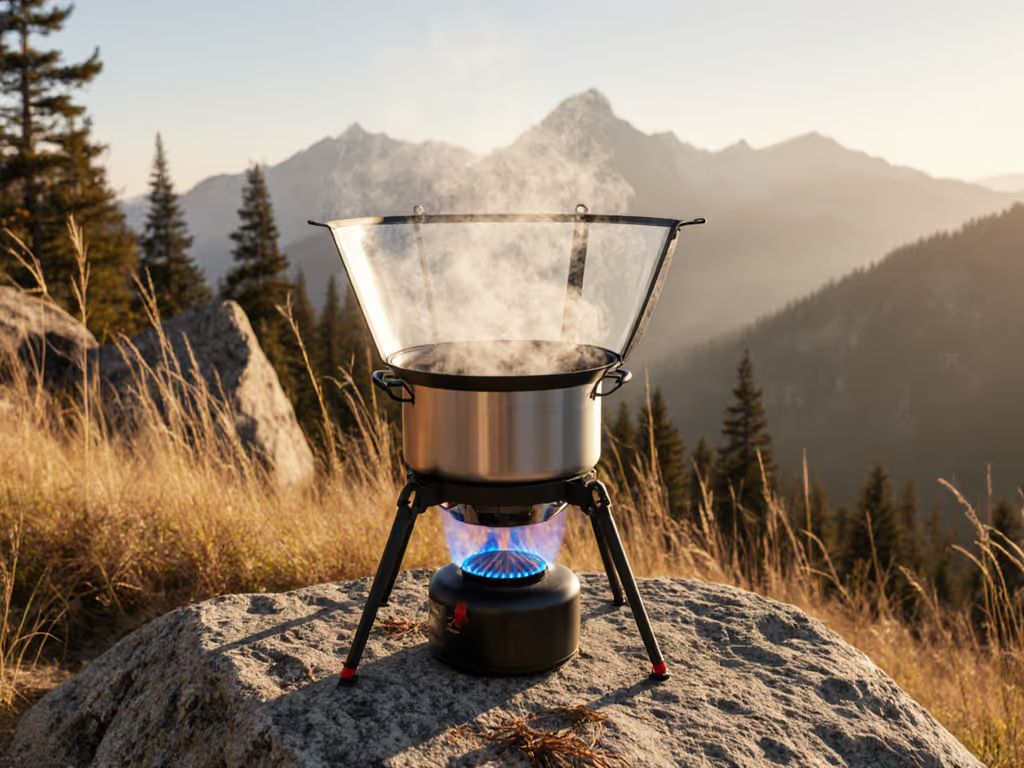
Camping Stove Guide: Windproof & Stable Choices for Trails
Use real-world criteria to pick a stove that stays stable and efficient in wind. Get clear guidance on simmer control, safe wind management, fuel trade-offs, and precise fuel planning for family-friendly cooking.
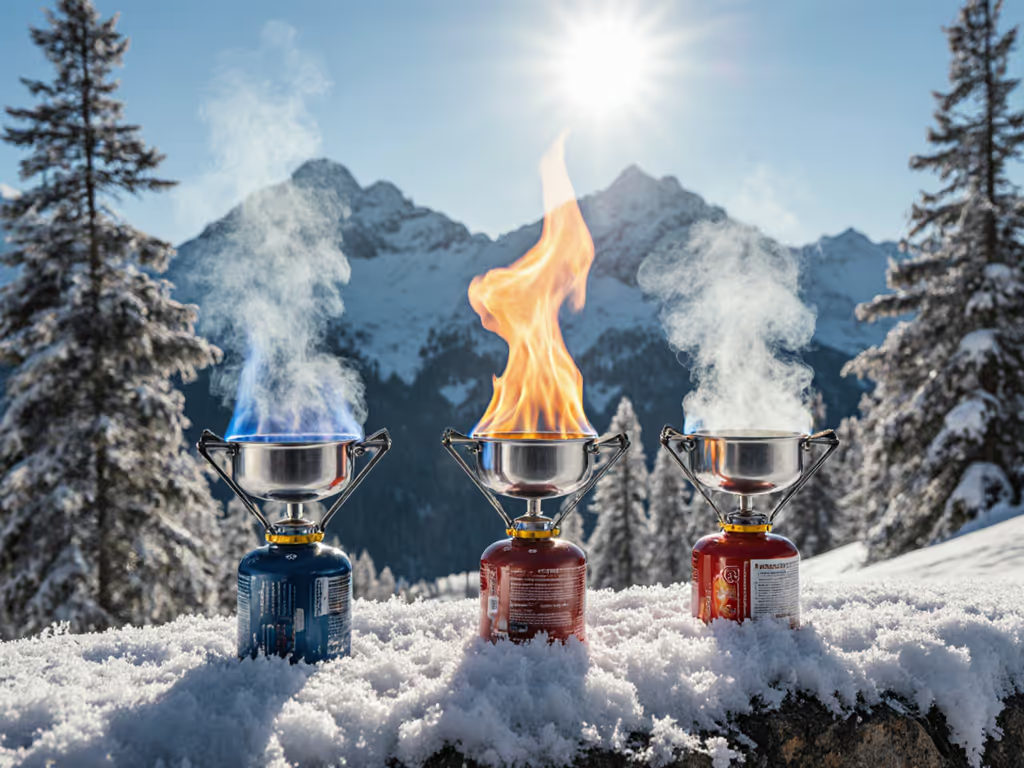
Propane vs Butane vs White Gas: Cold-Weather Performance Verified
Learn which fuel actually works when temperatures drop and altitude rises - propane, butane, or white gas - backed by field-tested thresholds for vapor pressure, ignition, and boil-time performance. Get clear, condition-based recommendations and a simple formula to plan reliable cold-weather fuel.
